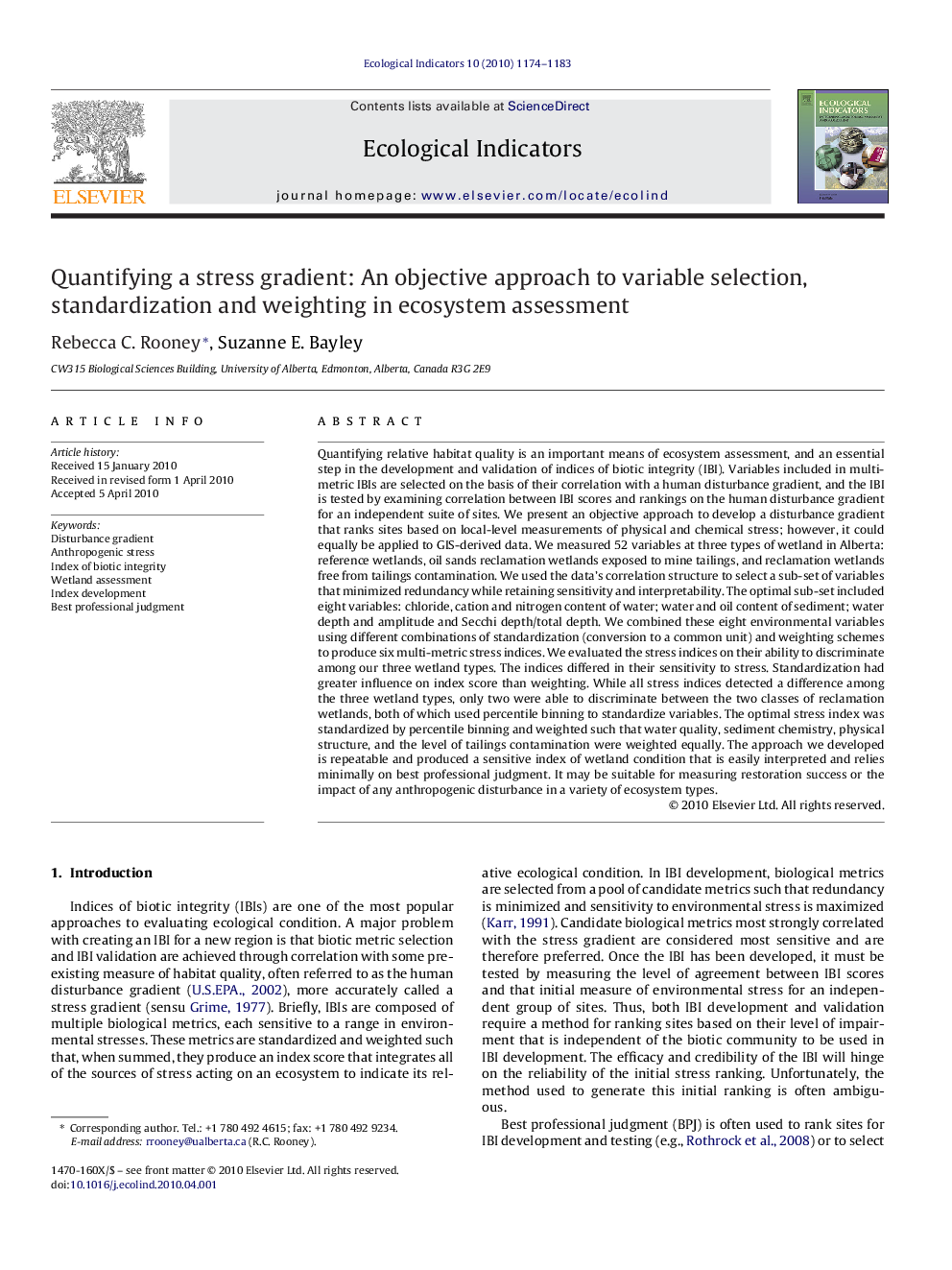| Article ID | Journal | Published Year | Pages | File Type |
|---|---|---|---|---|
| 4373862 | Ecological Indicators | 2010 | 10 Pages |
Abstract
Quantifying relative habitat quality is an important means of ecosystem assessment, and an essential step in the development and validation of indices of biotic integrity (IBI). Variables included in multi-metric IBIs are selected on the basis of their correlation with a human disturbance gradient, and the IBI is tested by examining correlation between IBI scores and rankings on the human disturbance gradient for an independent suite of sites. We present an objective approach to develop a disturbance gradient that ranks sites based on local-level measurements of physical and chemical stress; however, it could equally be applied to GIS-derived data. We measured 52 variables at three types of wetland in Alberta: reference wetlands, oil sands reclamation wetlands exposed to mine tailings, and reclamation wetlands free from tailings contamination. We used the data's correlation structure to select a sub-set of variables that minimized redundancy while retaining sensitivity and interpretability. The optimal sub-set included eight variables: chloride, cation and nitrogen content of water; water and oil content of sediment; water depth and amplitude and Secchi depth/total depth. We combined these eight environmental variables using different combinations of standardization (conversion to a common unit) and weighting schemes to produce six multi-metric stress indices. We evaluated the stress indices on their ability to discriminate among our three wetland types. The indices differed in their sensitivity to stress. Standardization had greater influence on index score than weighting. While all stress indices detected a difference among the three wetland types, only two were able to discriminate between the two classes of reclamation wetlands, both of which used percentile binning to standardize variables. The optimal stress index was standardized by percentile binning and weighted such that water quality, sediment chemistry, physical structure, and the level of tailings contamination were weighted equally. The approach we developed is repeatable and produced a sensitive index of wetland condition that is easily interpreted and relies minimally on best professional judgment. It may be suitable for measuring restoration success or the impact of any anthropogenic disturbance in a variety of ecosystem types.
Keywords
Related Topics
Life Sciences
Agricultural and Biological Sciences
Ecology, Evolution, Behavior and Systematics
Authors
Rebecca C. Rooney, Suzanne E. Bayley,
